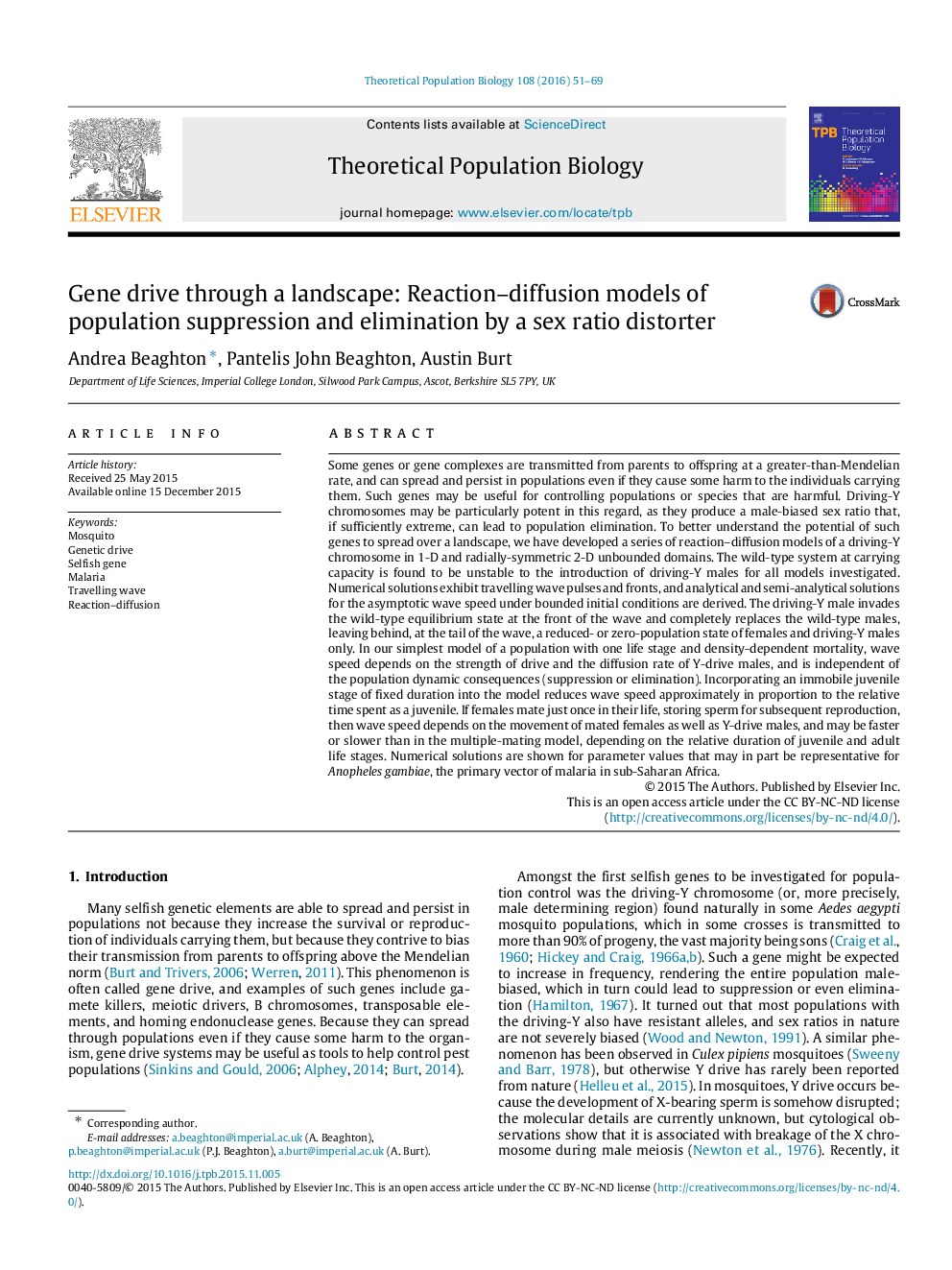| کد مقاله | کد نشریه | سال انتشار | مقاله انگلیسی | نسخه تمام متن |
|---|---|---|---|---|
| 6372306 | 1624144 | 2016 | 19 صفحه PDF | دانلود رایگان |
عنوان انگلیسی مقاله ISI
Gene drive through a landscape: Reaction-diffusion models of population suppression and elimination by a sex ratio distorter
ترجمه فارسی عنوان
ژن درایو از طریق یک چشم انداز: مدل های واکنش-انتشار برای سرکوب و حذف جمعیت توسط یک اختلال نسبت جنسی
دانلود مقاله + سفارش ترجمه
دانلود مقاله ISI انگلیسی
رایگان برای ایرانیان
کلمات کلیدی
پشه درایو ژنتیکی، ژن خودخواه، مالاریا، موج حرکتی، انتشار واکنش
موضوعات مرتبط
علوم زیستی و بیوفناوری
علوم کشاورزی و بیولوژیک
علوم کشاورزی و بیولوژیک (عمومی)
چکیده انگلیسی
Some genes or gene complexes are transmitted from parents to offspring at a greater-than-Mendelian rate, and can spread and persist in populations even if they cause some harm to the individuals carrying them. Such genes may be useful for controlling populations or species that are harmful. Driving-Y chromosomes may be particularly potent in this regard, as they produce a male-biased sex ratio that, if sufficiently extreme, can lead to population elimination. To better understand the potential of such genes to spread over a landscape, we have developed a series of reaction-diffusion models of a driving-Y chromosome in 1-D and radially-symmetric 2-D unbounded domains. The wild-type system at carrying capacity is found to be unstable to the introduction of driving-Y males for all models investigated. Numerical solutions exhibit travelling wave pulses and fronts, and analytical and semi-analytical solutions for the asymptotic wave speed under bounded initial conditions are derived. The driving-Y male invades the wild-type equilibrium state at the front of the wave and completely replaces the wild-type males, leaving behind, at the tail of the wave, a reduced- or zero-population state of females and driving-Y males only. In our simplest model of a population with one life stage and density-dependent mortality, wave speed depends on the strength of drive and the diffusion rate of Y-drive males, and is independent of the population dynamic consequences (suppression or elimination). Incorporating an immobile juvenile stage of fixed duration into the model reduces wave speed approximately in proportion to the relative time spent as a juvenile. If females mate just once in their life, storing sperm for subsequent reproduction, then wave speed depends on the movement of mated females as well as Y-drive males, and may be faster or slower than in the multiple-mating model, depending on the relative duration of juvenile and adult life stages. Numerical solutions are shown for parameter values that may in part be representative for Anopheles gambiae, the primary vector of malaria in sub-Saharan Africa.
ناشر
Database: Elsevier - ScienceDirect (ساینس دایرکت)
Journal: Theoretical Population Biology - Volume 108, April 2016, Pages 51-69
Journal: Theoretical Population Biology - Volume 108, April 2016, Pages 51-69
نویسندگان
Andrea Beaghton, Pantelis John Beaghton, Austin Burt,
